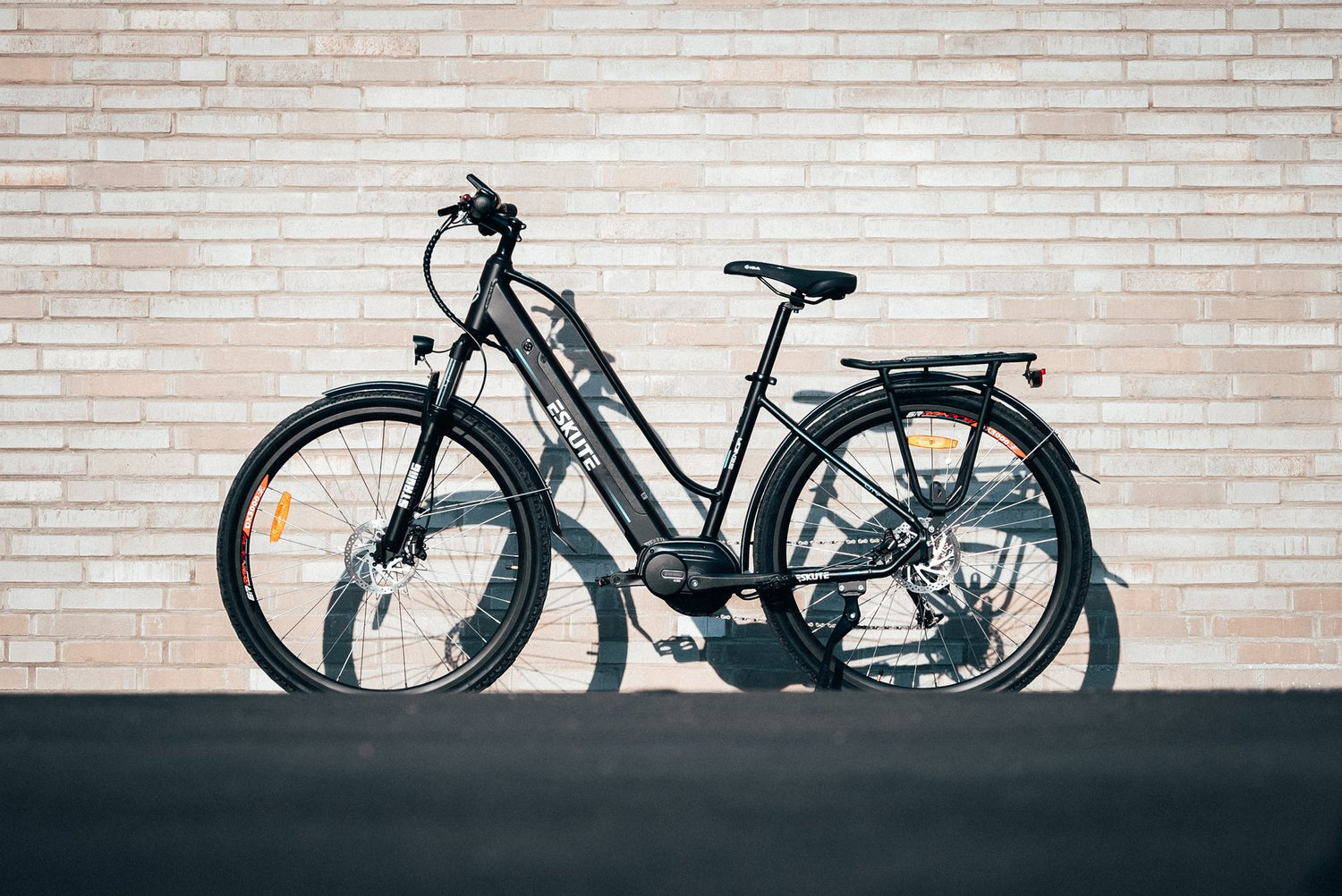
1. There are two types of motors, a hub drive, and mid-drive
An electric hub drive motor is housed in the wheel hub, on either the front hub or rear hub, but most commonly found in the rear. There are two types of hub drive motors, a geared hub motor or a direct drive hub motor. The geared hub motor includes a gear reduction mechanism internally to produce motor torque while the direct drive relies on the torque and speed of the motor itself.

A mid-drive motor is located near the center of the bike, usually in the bottom bracket area or just outside of it. Most mid-drive motors are integrated into the design of the frame and bikes have to be specifically made for them. Some mid-drive motors sit outside the frame and can thus be retrofitted into existing bikes, lowering investment costs and maximizing the use of a good bike.
Selecting the type and location of the motor greatly influences the characteristics of the e-bike.
2. For mountain bikes, mid-drive motors are essential
Mountain bikes are sophisticated machines that require ideal balance and weight distribution, especially when used in challenging terrain. In addition, pedal-assisted traction is important in loose and rocky situations. The following are some of the reasons why they’re ideal for mountain bike use.
-
Weight distribution - a motor typically weighs about 5+ lbs so it can affect the weight balance of a bike significantly. Hub motors bias the weight of the bike in the front or the rear making them suitable for road and commuting purposes only. Mountain bikes experience a lot of hilly terrain and very rough surfaces, so a mid-drive motor is an ideal tool for good weight distribution.
-
Torque Sensing - Hub motors usually integrate a torque sensor in the cranks and can thus assist proportionally to the effort of the rider. This gives the rider excellent traction and cornering control, modulating power when needed.

Pros of Mid-drive motors:
- Offers a significant amount of low-end torque
- Offers the highest performance of any motor type
- The rear wheel does not have the added weight of a motor and is generally easier to remove
- The power of the motor goes through the chain and the drive train, so it feels natural.
- Cons of Mid-drive motors:
- Most expensive option of the lot.
- The motor power runs through the chain, which puts more stress on the chain than any other motor type
- If the chain breaks on a mid-drive motor, the bike is no longer rideable.
Cons of Mid-drive motors:
- high cost
- mounting is specific to a frame, thus not interchangeable
- motor's power goes through the drivetrain increasing wear
- introduces drag when the motor is not on

3. For commuter and street bikes, hub motors hit an attainable price point
Commuter bikes are simpler than mountain bikes and the cost is usually a significant factor. These two qualities make hub motors sufficient drive units for commuter and street bikes and are cost-effective solutions.
Pros:
- Affordable
- Plenty of torque
- Can be retrofitted to most bikes
- Throttle-assist is widely available
- Can be retrofitted to some carbon frames
- Power-throttle can still be used in case the chain brakes
Cons:
- Heavy
- Consumes more power than mid-drives
- Cases of motor failures due to the excessive torque
- Need for a visible controller and a pedal-assist sensor
- Removing the rear wheel for a tire change can be complicated
- Weight distribution is not as great as most of the weight of the bike is at the rear wheel
- Hub-motor bikes are generally cheaper, therefore the bike spec is often built to match and save money
- Wheel spokes can work themselves loose over time as the power transition goes straight to the rear wheel
Hub motors, especially geared hub motors can do the job for commuter bikes and can bring the entry price to a more attainable level. When terrain is not too steep and the rider's needs are not too demanding, the hub drive is up to the task. But as the rider demands a smoother, more natural and balanced ride, a mid-drive motor e-bike is a more advanced and dialed solution.
4. What does motor power in watts mean?
The power of electric motors is best measured in watts. 1000 watts is equal to 1.34 hp, a measure used to measure engines and thus provides a frame of reference. But when it comes to eBikes, 1000 watts or 1 kilowatt is too big a unit of measurement, so watts are used.
A helpful table is below:
-
A 250-watt e-bike is a 0.33 horsepower e-bike (the limit for Class 1 e-bikes)
-
A 750-watt e-bike is a 1 horsepower e-bike
-
A 1500-watt e-bike is a 2 horsepower e-bike
For some reference, a person on a standard bike on flat ground needs 30 watts of power to average 9mph. But to average 20mph, about 200 watts is needed due to the exponential drag caused by wind resistance.
Riding uphill on a 10% graduate about 5mph takes 150 watts, an effort achievable by many cyclists but hard to sustain over 20 minutes or longer. An elite cyclist can sustain about 400 watts for an hour and a sprinter can hit above 1000 watts for about a minute.
Class 1 e-bikes are allowed to 250 watts with a speed limiter at 20mph. The highest e-bike allowed; Class 3 is allowed 750 watts. These wattage figures are sustained power levels the motor is capable off without heating up significantly. For peak power in short durations, most motors produce more.
-
Class 1 e-bike – pedal assist only with no throttle and a top powered speed of 20mph
-
Class 2 e-bike – Bike can be powered by the motor alone with a maximum powered speed of 20mph
-
Class 3 e-bike – pedal assist only with no throttle and a top powered speed of 28mph

5. What does battery WH mean?
Watt hours is a way to measure the energy capacity of a battery pack that powers bikes. The WH rating of a battery pack is the best indicator of what the range of an e-bike will be. WH is the voltage multiplied by the Amp rating of a battery. Thus a 50-volt 10-Ah battery pack has 500 watt-hours (50 X 10 = 500). Since a 500wh battery can produce 500 watts of power for an hour, powering a 250-watt motor can be sustained for 2 hours with this battery.
As what WH rating of a battery increases, the size of the battery and the cost go up. Typically, a 500wh battery is the size of two big water bottles, weighs about 7 lbs and costs about $500-$700.
The battery cells are typically Lithium-Ion and are similar to the ones used to power anything from bike lights, cordless drills to electric cars. They normally have a lifespan of 1000 full charge cycles and take about 4 hours to charge.
Editor's Note: Article created in collaboration with Eskute.
About Eskute: Commuting and street riding on e-bikes and e-scooters is what Eskute specializes in. They enable regular riding even with hilly commutes and hilly conditions. That’s 100% of what an electric bicycle from ESKUTE does. Avoid traffic, save resources, get fit and make the effort flexible so you can do it day and day out.
To see Eskute's line of e-bikes, click HERE
From mtbr.com










1 comment
STELLA VERON
I am still recovering from an injury which has affected the strength level in my legs, I am looking to find as much information about what e bike would be suitable for me,
I live in the countryside thankfully no steep hills.
Would you be able to help me .
Kind regards
Stella ☺️
Leave a comment
This site is protected by hCaptcha and the hCaptcha Privacy Policy and Terms of Service apply.